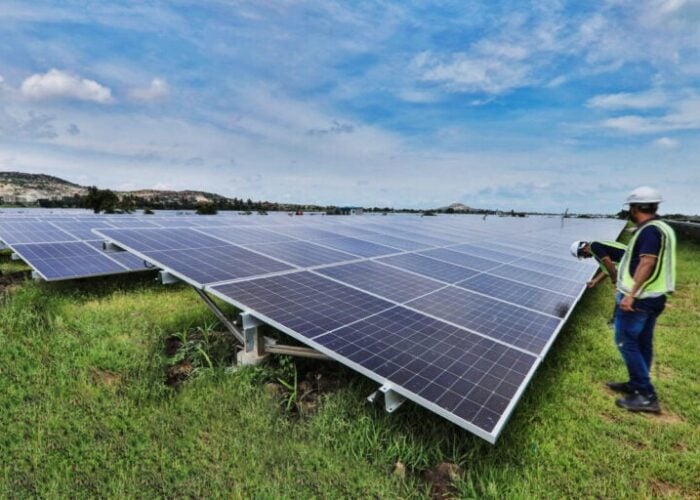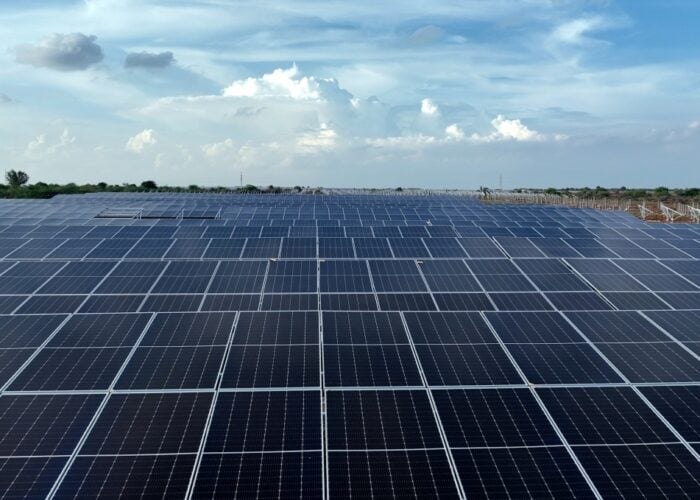Delhi-headquartered renewable energy firm Hero Future Energies has completed India’s first large-scale solar and wind energy hybrid project in the state of Karnataka.
The project at Kavithal, Raichur District, which included an existing 50MW wind farm, now has a neighbouring 28.8MW solar PV site to form a hybrid system. The project’s evacuation capacity remains at 50MW since the primary aim is to address grid-integration concerns around variable power coming from renewable energy.
Try Premium for just $1
- Full premium access for the first month at only $1
- Converts to an annual rate after 30 days unless cancelled
- Cancel anytime during the trial period
Premium Benefits
- Expert industry analysis and interviews
- Digital access to PV Tech Power journal
- Exclusive event discounts
Or get the full Premium subscription right away
Or continue reading this article for free
At the inauguration, Rahul Munjal, chairman and managing director Hero Future Energies, told PV Tech that despite well-publicised government plans to introduce a wind and solar hybrid policy, none has been released yet due to uncertainty on how to price such technology combinations. Without adequate pricing, project developers would not be able to sell their power to a distribution company (Discom) or partake in an auction where prices are the cornerstone of the bidding.
I’ve always maintained the toughest thing about doing renewables in India is land
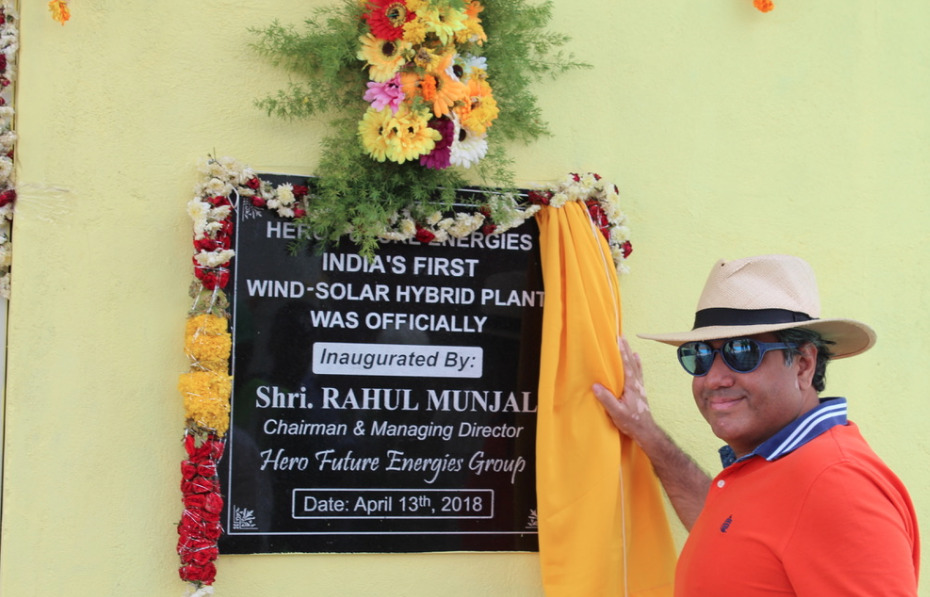
However, Hero was able to go ahead with this pioneering hybrid, because it is a group captive project, where the off-takers are a number of unnamed private companies based in the state of Karnataka. This gave Hero the freedom to deliver the pricing on its own terms, while of course delivering huge cost savings to the consumers as compared to normal grid electricity.
Munjal said that, were the government to release a suitable hybrid policy, then it would make sense to move more of Hero’s own existing sites into hybrid systems and he expects much of the rest of the industry to follow suite with this group captive model for hybrid systems.
Having been one of the first companies to try out a new length of wind turbine blade with Regen several years back, Munjal maintained that one of Hero’s philosophies is to be first to market with new technologies and the firm is constantly looking at how to innovate. It is already a heavyweight in the industry with around 1.2GW installed renewables capacity, with another 500MW under construction and 300MW now ready for building.
Referring to another Spanish company that claimed its wind projects were working better today than they had originally forecast 25 years ago, Munjal said the next push in renewables creativity and R&D will be retrofitting existing sites and working out how to extract more energy from them.
Rural south India – Approaching the site
Flying from Hyderabad in Telangana, towards Karnataka, several individual solar and wind projects – as well as the occasional thermal power plant – could be seen marking the flat plains of this part of central, southern India.
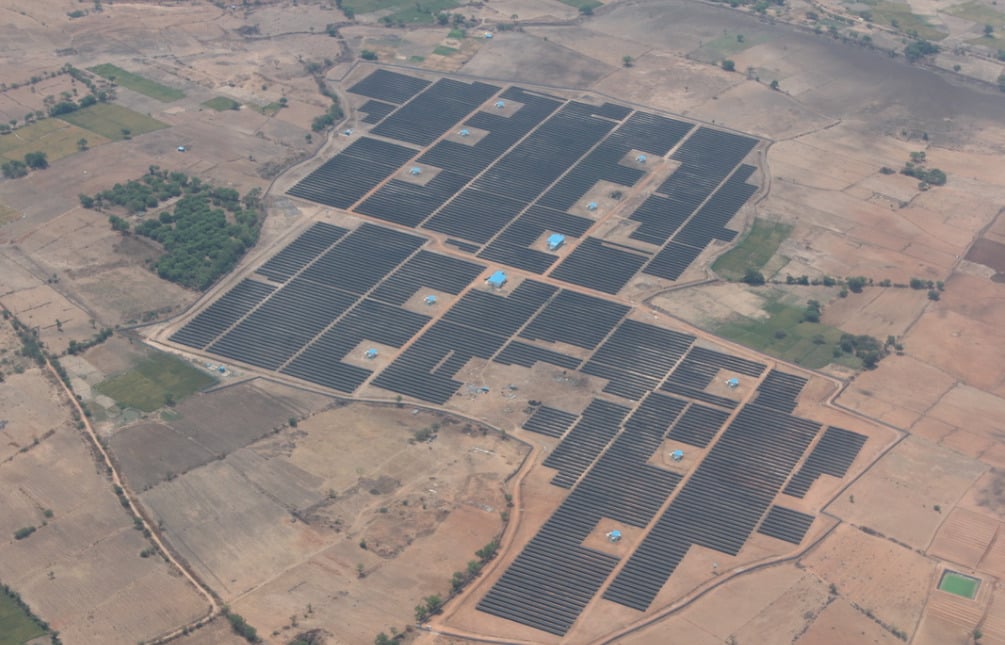
Overland, villagers dried red chillies in the sun, sat in the shade of the trees or played cricket in the cooler morning hours, while traffic waited for herds of goats, horses or sparring cattle to cross the roads.
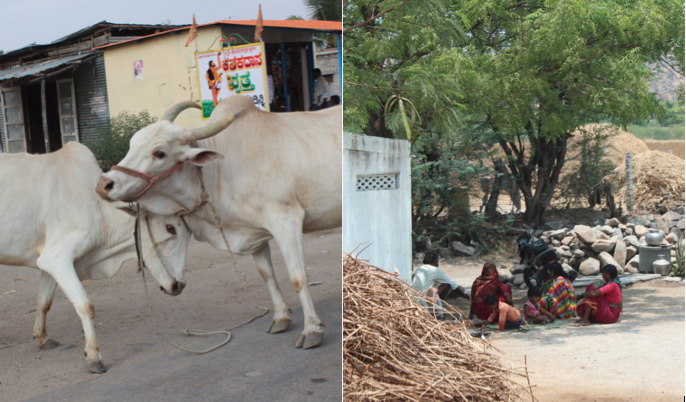
Apart from green pockets of lush agriculture, formed through irrigation, the land is sparse, barren and sunburnt with temperatures regularly hovering around 40 degrees Celsius at this time of year.
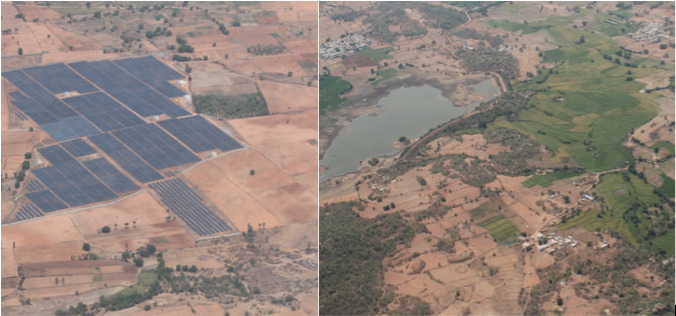
Technology
At Kavithal, both the wind and solar plants were developed by Hero Future Energies and built by EPC contractor Siemens Gamesa.
The wind project uses Siemens Gamesa turbines and inverters, while the solar PV project uses Gamesa inverters and 320/325W modules from China-based manufacturer Suntech. Cables came from Hyderabad-based firm KEC International, and steel for mounting structures was sourced locally to Hero’s specifications.
Beside some of the solar arrays lay a large assembly of boxes bearing the Suntech logo. These modules were resting in storage soon to be transported within the month to Hero’s 400MW of other PV capacity being set up in the state.
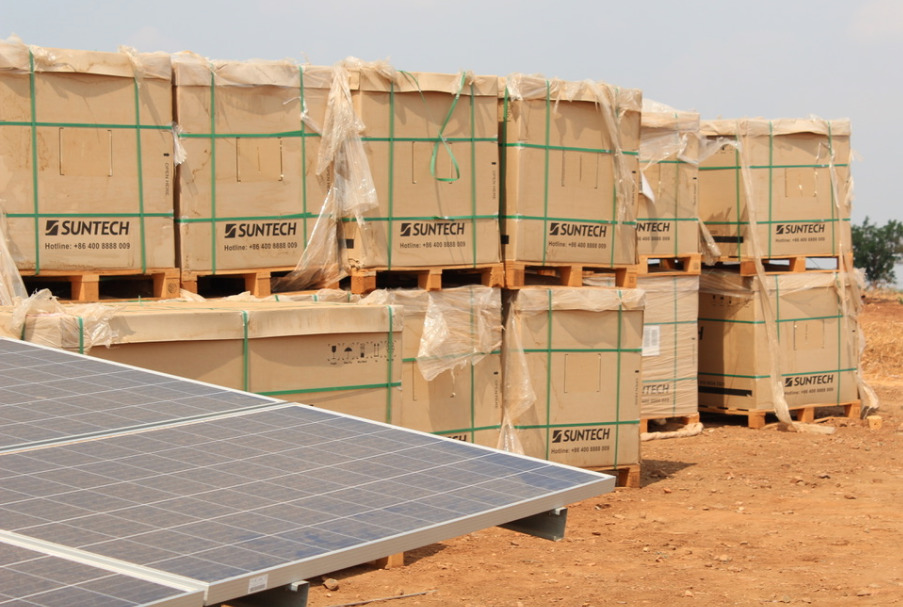
Hybrid to grid
Perhaps the most significant offering of a hybrid renewables system is its beneficial impact on the grid when compared to single technology renewables projects.
Munjal said that wind tends to rise early in the morning and in the evenings, while sunshine comes in the day, so the two sources of power generation are complementary to each other. Not only does this smooth out the overall energy production over a 24-hour period, but it also increases the plant load factor (PLF).
Indeed, individually the wind PLF is 28%, while the solar PLF is 18.7%. This brings the total PLF for the whole project to 41.8%.
Looking seasonally, wind increases ahead of the Monsoon, said Munjal, but when the rains come, the wind does start to die down.
The hybrid element is extremely pertinent to India’s renewable energy industry given the increasing penetration of renewables onto the grid. Consistent forecasts from analysts suggest that the country will face major grid integration issues in the coming years if network infrastructure is not improved at the same rate as renewables capacity additions. Indeed both India’s authorities and renewables industry have been accused of having their ‘heads in the sand’ over the grid integration issue in the past.
Moreover, the Green Energy Corridors, touted to help evacuate power from states rich in renewable energy resources (high irradiation and strong, consistent winds) to states with high power demand, have faced delays and by some reports have also faced a serious lack of funding.
Pricing
To calculate the hybrid pricing, Munjal said that using highly advanced, modern technologies and software, one can take an assumption of how much solar and wind will be generated separately, before taking a weighted average of the generation and price.
He said: “The beauty is the price for both gets lowered since the infrastructure is common. You are using the same evacuation, you are using the same substation etc.”
Indeed, due to the existing wind site, almost all the necessary infrastructure for the solar plant was already available, and the project only required a few enhancements, such as updating the inverter technologies. Some extra land had to be purchased for the solar system, which is spread across 65 hectares, but Hero was already familiar with the location, the landscape and the local authorities, which made the process easier than developing a standard PV project from scratch.
Land headache relief
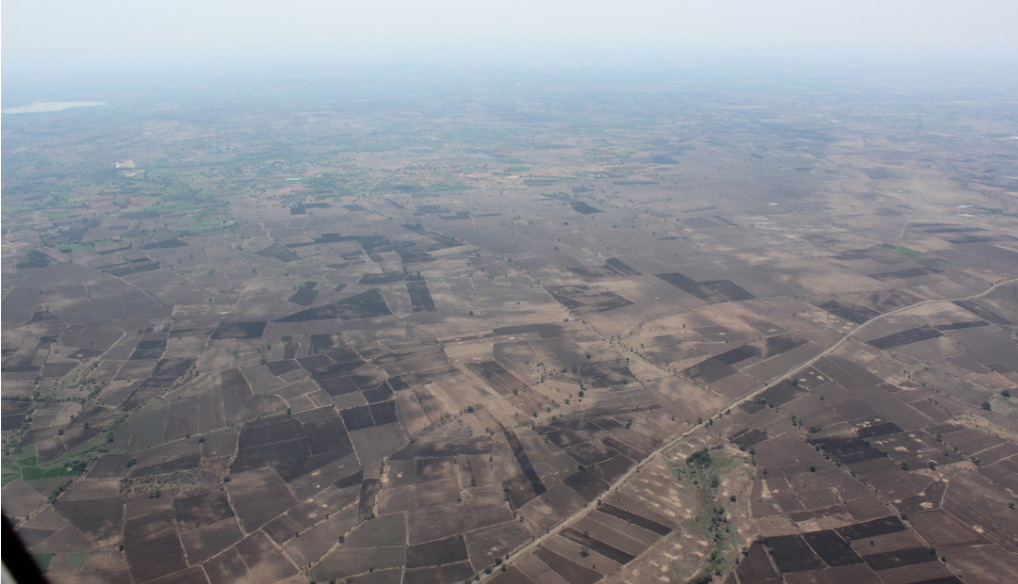
Karnataka itself is also particularly affable to renewable energy, because there is plenty of land, with strong winds and irradiation. Munjal said it will become the next big state for wind capacity after Tamil Nadu, and it is already a leading state for solar.
However, describing the process of delivering transmission to the project, he said: “When you are building that 20 kilometre [transmission line] the number of people that you have to encounter… I’ve always maintained the toughest thing about doing renewables in India is land.”
Indian land records are not digitised so one has to deal with both a private surveyor and a government surveyor and plots of land that are suitable for a project can be owned by hundreds of different people.
“Land is only 5-10% of our cost, but 95% of problems lies with land,” said Munjal.
Thus, even though Hero had to purchase some extra land for the project, the hybrid element actually reduced the land requirement, particularly with transmission and this for Munjal is “going to be the biggest benefit” of hybrids.
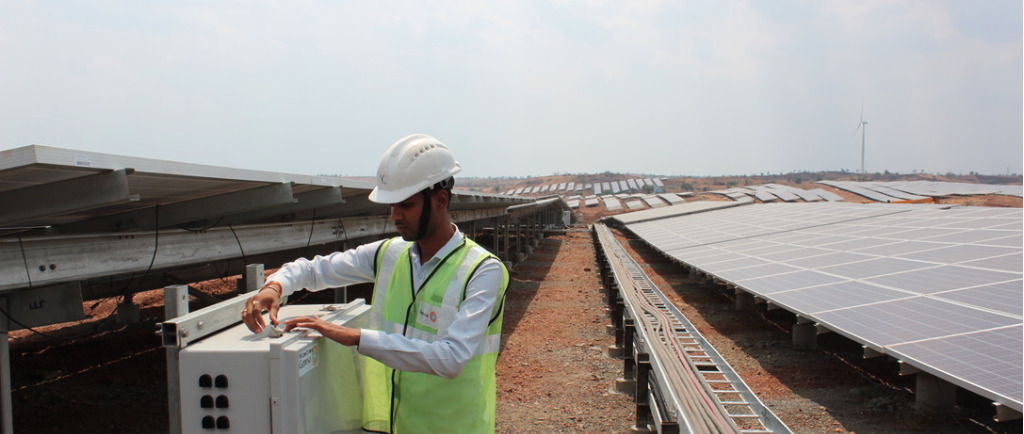
Atul Raaizada, senior VP projects and O&M, large wind and solar farms, Hero Future Energies, said his team studied the wind project for three months before coming up with the hybrid concept, learning how to minimise energy wastage when combining both wind and solar at the right levels. Once the combination is understood, execution is easy, he said.
He also highlighted that this particular project location, which has consistently strong irradiation, is both on hilly land, which is conducive to wind, and on barren land, therefore not impacting agricultural production. This is “the best of everything”, he said.
The specific generation capacities were chosen to find the most suitable balance and minimise the clipping (curtailment) of solar and wind, should their generation go above the 50MW evacuation limit, said Raaizada. Having to find that right balance stemmed from being unable to regulate wind generation due to the huge mechanical components in use.
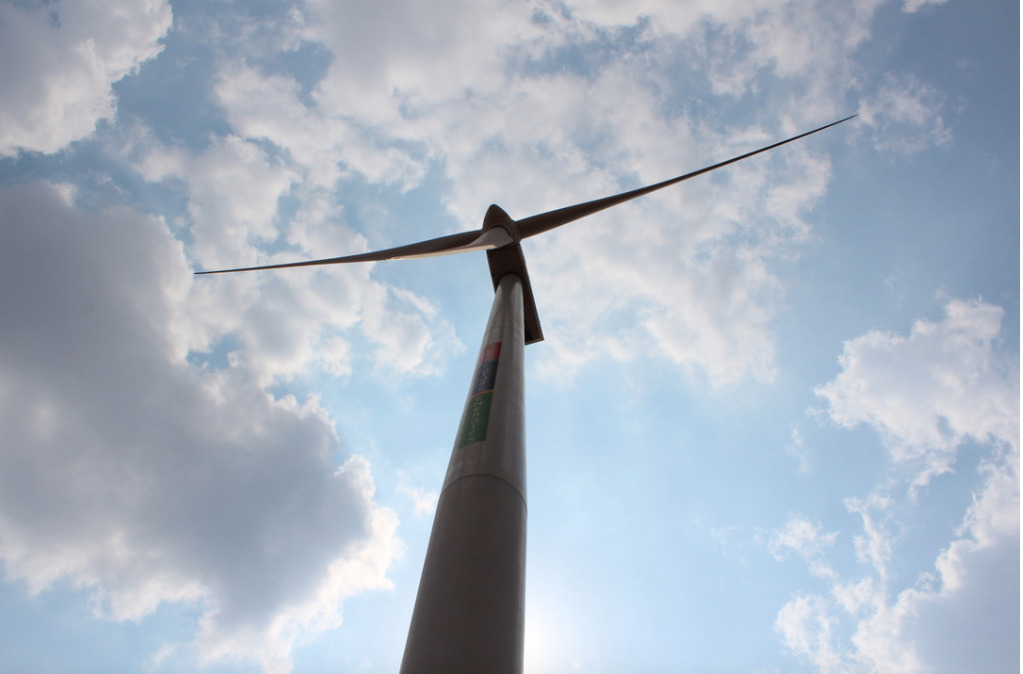
Module performance
An unsung benefit of hybrid systems is that by choosing a location with naturally high wind resources, the temperature of the solar modules is also reduced by the breeze, thus increasing the PV generation, said Raaizada.
Year-round lower temperatures on the solar panels from the wind also reduces the rate of degradation in the modules.
Hybrid cost savings
Not only does the hybrid system share the transmission infrastructure, but the operations are also shared by the same teams, thereby reducing costs even further.
However, operations and Maintenance (O&M) teams are different since the solar system requires manual, water-based cleaning twice a month, in this extremely dusty region. Munjal said barren land is naturally dusty, but there are two types of dust that impact solar. Dry dust, as in the arid, desert state of Rajasthan, can be easily wiped off or blown off by the wind, but dust in humid conditions tends to stick the panels, which can impact irradiation on the panels and cause soiling in the long-term.
Energy storage lurking
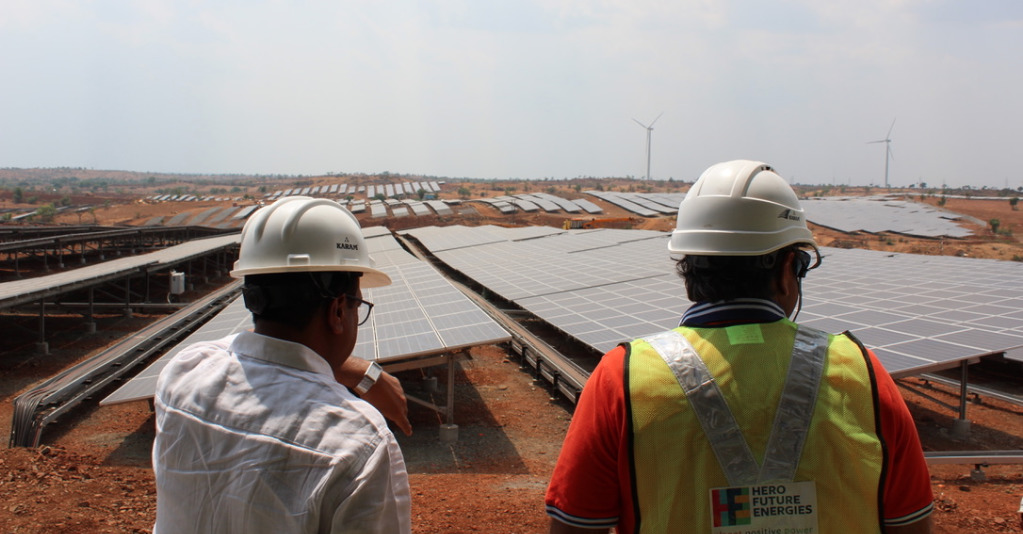
In its draft solar wind hybrid policy, Ministry of New and Renewable Energy (MNRE) had targeted 10GW by 2022. Following this, the state of Andhra Pradesh released a draft document outlining its plans for 3GW of wind and solar hybrid projects by 2019/20. But while policy action stuttered since these annoucments, the next stage after wind and solar hybrids, which introduces a third pillar in the form of energy storage, seems to be progressing with its own momentum.
Andhra Pradesh authorities are already planning to tender a project involving 120MW of solar, 40MW of wind and 20-40MWh of storage this year. Meanwhile, Kerala’s Agency for Non-Conventional Energy and Rural Technology (ANERT), is working on an experimental, technology demo to include 3MW of solar, 4MW of wind, and battery storage.
Indian power minister R.K. Singh also recently chaired a meeting with battery-based energy storage manufacturers calling on them to set up manufacturing units in India. His urgency stemmed not only from the government’s push on electric vehicles (EVs) and its expected surge in the coming years, but also because Singh said future tenders will cover hybrid solar and wind projects to be coupled with energy storage.
Munjal said he believes that large-scale coupling with energy storage will proliferate in the next two to three years. While price remains a problem, Hero is already using storage to benefit its own plants but at a very small scale – carryng out studies with small batteries.
Raaizada said Hero is looking at future smoothing of the grid using storage and also releasing stored energy at peak times on the grid.
More room for error
Karnataka was among the first states to take on new forecasting rules, following the example of Tamil Nadu, so it requires plant operators to provide more frequent and accurate projections of energy production or face penalties.
Rather than making this forecasting more challenging, the combination of overlapping of wind and solar generation has actually increased the room for error, thus increasing the overall performance of the project’s scheduling and forecasting.
Munjal said that forecasting software is also becoming more and more reliable, but while strict rules on forecasting are necessary for the industry, how to penalise for non-compliance is up for debate.
“It has to be a three, four year programme,” He said. “Rome wasn’t built in a day – you cant expect us to be perfect at it from day one. So some of the states which are more stringent than they should be. While some states understand it and they are giving us a little bit of a breather and saying as long as we see a positive correlation, we give you a couple of years to stabilise your systems.”
The problem is that developers rely on several sets of data: from NASA, satellite data, and third-party software. Nonetheless, the hybrid project benefits actually negate the threat of unreliable data and inaccurate readings.
India’s Hybrid future
Looking at how India can drive wind solar hybrids into the mainstream, Munjal said: “We should start a narrative where we should ask the government as the industry to come up with wind-solar hybrid tenders.”
Existing Solar Park projects, where the government has been monitoring progress closely will be the most suitable locations to add wind, while fresh tenders for new wind and solar together will be easier to bid out and get a price for both sources together from scratch.
Vinay Rustagi, managing director of consultancy firm Bridge to India, told PV Tech: “There are two main benefits of wind solar hybrids. The first one is, obviously, there is better and more efficient use of the land and transmission infrastructure, so that reduces the capital cost by something like 5-7% and that is parked through and results in overall lower tariff. So I think the Discoms and the power purchaser should actually be keen on hybrid projects like this.
“The hybrid power project also makes the power output a little bit more reliable than a standalone solar or standalone wind project so that again from a Discom's point of view or from a transmission grid stability point of view should be actually better for the entire system.”
The benefits of hybrid renewables have been made clear and, if Munjal is correct, Hero Future Energies' pioneering mark on the industry should see plenty more players following suite, but only with private offtakers until a suitable government policy is released.
PV Tech also recently interviewed Sunil Jain, chief executive and executive director of Hero Future Energies, about India's utility-scale PV market.



